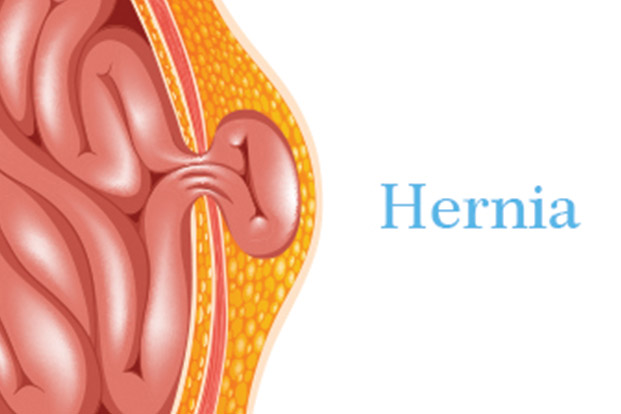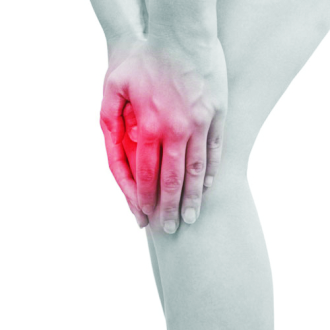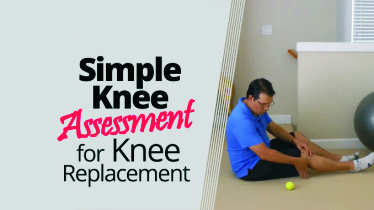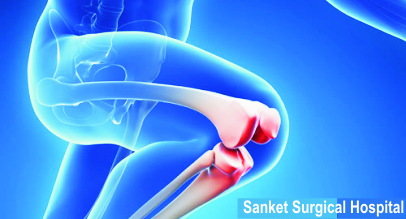How to cure treatment & Symptoms are Piles/Hernia/Knee Replacement /Urology stone in Sanket Surgical Hospital
How to Cure Piles , Piles Symptoms, Piles Home Remedies, Piles Pain Relief, Piles Disease, Hernia Symptoms, Hernia Treatment, Hernia Pain, Hernia Operation, Hernia Pain Relief, Artificial Joint Replacement, Joint Replacement Center, Ball Joint Replacement Center For Joint Replacement,Orthopedic Joint Replacement, Joint Replacement Operation, Surgical Replacement Of A Joint, Hip Replacement Repair Surgery,Total Hip Replacement Surgery Procedure, Total Joint Replacement Surgery, Total Knee Joint Replacement Surgery, Sanket Surgical Hospital Covered Bapunagar, Nikol, Thakkarbapa, Odhav, India Colony, Hirawadi, Viratnagar
Knee replacement surgery: What you need to know
Knee replacement surgery restores the weight-bearing façade of a damaged, worn, or diseased knee joint. The aim is to remove pain and restore mobility.
It is also known as knee arthroplasty, or “knee resurfacing.”
The surgeon caps the ends of the bones that form the knee joint with metal or plastic components, or implants a prosthetic, shaped as a joint. This enables the knee to move properly.
Replacement knee surgery can help patients whose knee or knees have degenerated due to osteoarthritis, rheumatoid arthritis or post-traumatic arthritis, when an injury has damaged the knee.
It is considered a routine procedure. Every year, over 600,000 knee replacement surgeries are carried out in the United States. Most patients are aged between 50 and 80 years. Over 90 percent of patients experience a dramatic improvement in pain levels and mobility.
As long as the patient follows the surgeon’s instructions for knee care, in 90 percent of cases, a replacement knee still functions well after 15 years, and 80 to 85 percent of replacements last 20 years.
What is knee replacement and why is it useful?
As the covering of the knee bones wear out and the ends of the bones rub together, damage can occur.
Knee replacement is a kind of arthroplasty. Arthroplasty literally means “the surgical repair of a joint,” and it involves the surgical reconstruction and replacement of degenerated joints, using artificial body parts, or prosthetics.
With a prosthesis, the patient will feel less pain, and the knee will move properly.
Why have knee replacement surgeries?
There are three common reasons for the procedure:
Osteoarthritis is caused by Inflammation, breakdown, and the gradual and eventual loss of cartilage in the joints. Over time, the cartilage wears down and the bones rub together. To compensate, the bones often grow thicker, but this results in more friction and more pain.
Who might need a knee replacement?
Knee surgery may be suitable for patients who experience:
- Severe knee pain or stiffness that prevents them from carrying out everyday tasks and activities, such as walking, going upstairs, getting in and out of cars, getting up from a chair
- Moderate but continuous knee pain that continues while sleeping or resting
- Chronic knee inflammation and swelling that does not improve after taking medications or resting
- Knee deformity, where there is a noticeable arch on the inside or outside of the knee
- Depression , resulting from an inability to carry out daily or social activities
If the other available treatment options have not worked, surgery may be the best option.
Types of knee replacement surgery
Knee replacement can be total or partial.
If a knee is damaged by arthritis, replacing part of the joint may bring relief.
Total knee replacement (TKR): Surgery involves the replacement of both sides of the knee joint. It is the most common procedure.
Surgery lasts between 1 and 3 hours. The individual will have less pain and better mobility, but there will be scar tissue, which can make it difficult to move and bend the knees.
Partial knee replacement (PKR): Partial replacement replaces only one side of the knee joint. Less bone is removed, so the incision is smaller, but it does not last as long as a total replacement.
PKR is suitable for people with damage to only one part of the knee. Post-operative rehabilitation is more straightforward, there is less blood loss and a lower risk of infection and blood clots.
The hospital stay and recovery period are normally shorter, and there is a higher chance of more natural movement.
Preparing for surgery
Knee arthroplasty involves major surgery, so pre-operative preparation, medical consultations, and physical evaluations usually begin a month before the set date of the operation.
Preparatory and diagnostic tests will include checking blood count, seeing how the blood clots, carrying out electrocardiograms (ECGs), and urine tests.
Surgery is usually performed either under general, spinal, or epidural anesthetic.
During the procedure, the orthopedic surgeon will remove the damaged cartilage and bone, and then position the new implant, made of metal, plastic, or both, to restore the alignment and function of the knee.
Recovery
A patient who has knee replacement surgery will be hospitalized for, 1 to 3 days depending on how well they follow and respond to rehabilitation.
There will be pain, but a day after the procedure medical staff will encourage patients to get up and try to walk about, usually with some kind of walking aid. It is important to follow the instructions for rehabilitation.
Crutches may be needed during recovery.
- To take iron supplements to aid wound healing and muscle strength
- Not to bend down and lift heavy things, at least for the first few weeks
- Not to stay standing still for long periods, as the ankles might swell
- To use crutches, a walking stick, or a walker until the knee is strong enough to take your body weight
- To use all medications according to the instructions
- To carry out the recommended exercises to encourage proper mobility
- To keep the affected leg raised on a footstool when sitting
- To avoid soaking the wound until the scar is completely healed, because of the risk of infection
- To monitor for any signs and symptoms of infections, blood clots or pulmonary embolism
Precautions should be taken to avoid a fall, as this might mean further surgery.
Useful measures include:
- Ensuring there is a secure handrail and using a stable, nonslip bench or chair in the shower
- Where possible, sleeping downstairs
- Securing any loose carpets and removing wrinkly mats around the house
- Removing or securing any trip hazards, such as loose wires
Most people can resume normal activities 6 weeks after the operation, but there may be some pain and swelling for up to 3 months, and scar tissue and muscles will still be healing for the next 2 years.
Items that may help at home include:
- A raised toilet seat
- A reaching stick for picking up items from the floor
- A long-handled shoe horn
Patients who have undergone knee replacement surgery can expect to participate in moderate and low-impact exercise activities, such as walking, swimming, and biking, but they should avoid extreme sports.
Treatment of a hernia
depends on whether it is reducible or irreducible and possibly strangulated.
- Reducible hernia
- In general, all hernias should be repaired to avoid the possibility of future intestinal strangulation.
- If you have preexisting medical conditions that would make surgery unsafe, your doctor may not repair your hernia but will watch it closely.
- Rarely, your doctor may advise against surgery because of the special condition of your hernia.
- Some hernias have or develop very large openings in the abdominal wall, and closing the opening is complicated because of their large size.
- These kinds of hernias may be treated without surgery, perhaps using abdominal binders.
- Some doctors feel that the hernias with large openings have a very low risk of strangulation.
- The treatment of every hernia is individualized, and a discussion of the risks and benefits of surgical versus nonsurgical management needs to take place between the doctor and patient.
-

http://business24online.com/company/sanket-surgical-hospital-hernia-piles-stone-joint-knee
- Irreducible hernia
- All acutely irreducible hernias need emergency hernia repair because of the risk of strangulation.
- An attempt to reduce (push back) the hernia will generally be made, often after giving medicine for pain and muscle relaxation.
- If unsuccessful, emergency surgery is needed.
- If successful, however, treatment depends on the length of the time that the hernia was irreducible.
- If the intestinal contents of the hernia had the blood supply cut off, the development of dead (gangrenous) bowel is possible in as little as six hours.
- In cases in which the hernia has been strangulated for an extended time, a surgeon will perform surgery to check whether the intestinal tissue has died and to repair the hernia.
- In cases in which the length of time that the hernia was irreducible was short and gangrenous bowel is not suspected, you may be discharged from the hospital.
- If a hernia that appears irreducible is finally reduced, it is important for a patient to consider a surgical correction. These hernias have a significantly higher risk of getting incarcerated again.
How to cure treatment & Symptoms are Piles/Hernia/Knee Replacement /Urology stone in Sanket Surgical Hospital
Piles Treatments
In the majority of cases, simple measures will alleviate symptoms while hemorrhoids get better without treatment. However, medicines and even surgery may sometimes be needed.
Specialist ultrasonic device for hemorrhoid surgery.
Symptoms can be relieved in the following ways. However, they will not eliminate the hemorrhoids:
How to cure treatment & Symptoms are Piles/Hernia/Knee Replacement /Urology stone in Sanket Surgical Hospital
- Topical creams and ointments: Over the counter (OTC) creams or suppositories, which contain hydrocortisone, are. There are also pads which contain witch hazel, or a numbing agent that can be applied to the skin.
- Ice packs and cold compresses: Applying these to the affected area may help with the swelling.
- A sitz bath using warm water: A sitz bath is placed over the toilet. Some pharmacies sell them, and they may relieve the burning or itching symptoms.
- Moist towelettes: Dry toilet paper may aggravate the problem.
- Analgesics: Some painkillers, such as aspiring ibuprofen, and acetaminophen may alleviate the pain and discomfort.
Kidney Stone Treatment
Treatment for kidney stones varies, depending on the type of stone and the cause.
Small stones with minimal symptoms
Most small kidney stones won’t require invasive treatment. You may be able to pass a small stone by:
- Drinking water. Drinking as much as 2 to 3 quarts (1.9 to 2.8 liters) a day may help flush out your urinary system. Unless your doctor tells you otherwise, drink enough fluid — mostly water — to produce clear or nearly clear urine.
- Pain relievers. Passing a small stone can cause some discomfort. To relieve mild pain, your doctor may recommend pain relievers such as ibuprofen (Advil, Motrin IB, others), acetaminophen (Tylenol, others) or naproxen sodium (Aleve).
- Medical therapy. Your doctor may give you a medication to help pass your kidney stone. This type of medication, known as an alpha blocker, relaxes the muscles in your ureter, helping you pass the kidney stone more quickly and with less pain.
- How to cure treatment & Symptoms are Piles/Hernia/Knee Replacement /Urology stone in Sanket Surgical Hospital












